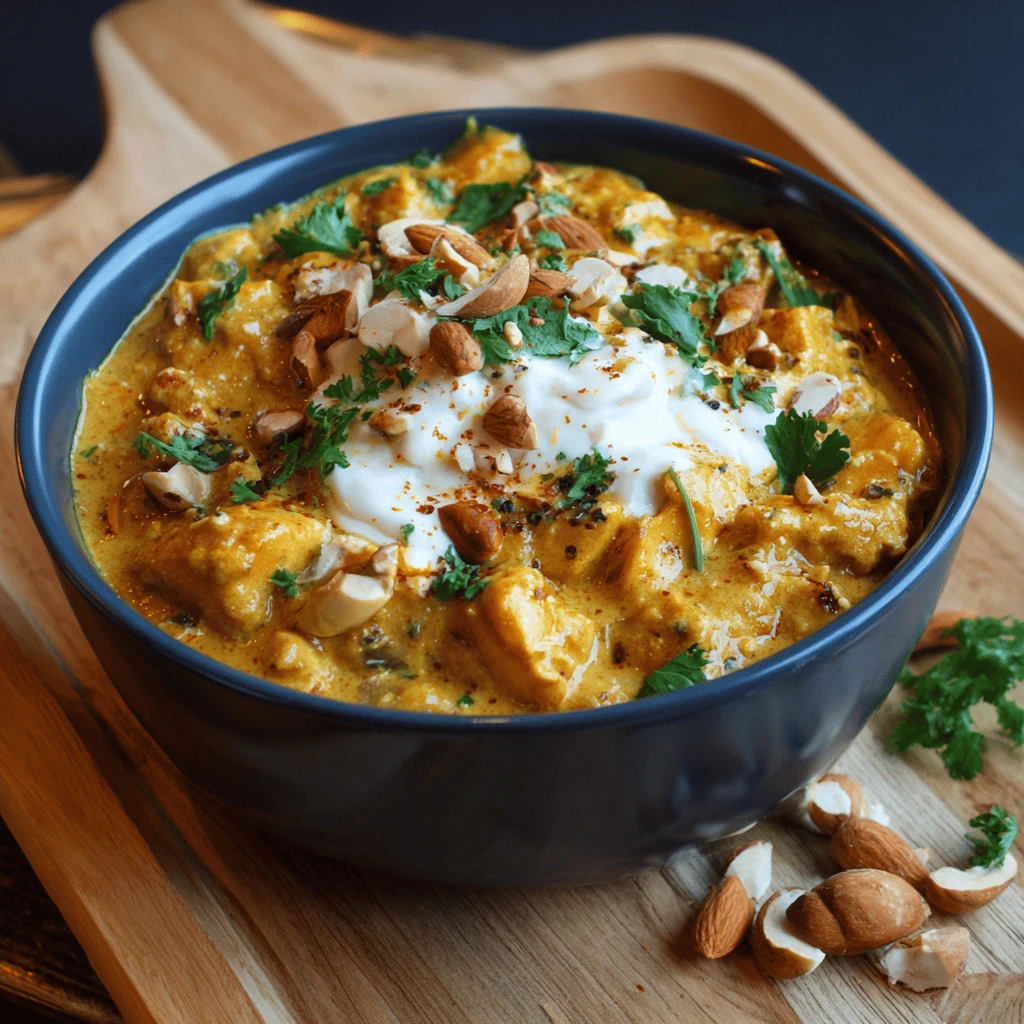Quick Low Carb Pumpkin Curry: A Cozy and Healthy Delight
Pumpkin curry offers a delightful blend of sweet and savory flavors, perfect for a comforting and healthy meal. This low-carb version allows you to enjoy the richness of pumpkin and aromatic spices without the guilt. This recipe is designed for speed and convenience, making it ideal for busy weeknights.
Understanding Low Carb Pumpkin Curry
A traditional pumpkin curry often relies on ingredients high in carbohydrates, such as rice, potatoes, or excessive amounts of added sugar. This low-carb adaptation focuses on substituting those ingredients with healthier alternatives like cauliflower rice, spiralized zucchini, or lower-carb sweeteners. The result is a creamy, flavorful curry that won’t spike your blood sugar.
What Makes this Curry Low Carb?
- Pumpkin: While pumpkin does contain carbohydrates, it’s also packed with fiber, which helps to mitigate the impact on blood sugar levels.
- Coconut Milk: Provides richness and creaminess without added sugars.
- Low-Carb Vegetables: Cauliflower, spinach, bell peppers, and zucchini are excellent additions that contribute to the curry’s flavor and texture while keeping the carb count low.
- Spice Blends: Curry powder and other spices add depth and complexity without adding carbs.
- Low-Carb Sweetener (Optional): A small amount of erythritol or stevia can balance the savory flavors if desired, but it is not necessary.
The Ultimate Quick & Easy Recipe
This recipe is crafted for efficiency, using readily available ingredients and simple cooking techniques. It’s adaptable to your preferences, allowing you to adjust the spice level and vegetable additions.
Ingredients:
- 1 tbsp coconut oil
- 1 small onion, chopped
- 2 cloves garlic, minced
- 1 inch ginger, grated
- 1 red bell pepper, chopped
- 1 (14.5 oz) can pumpkin puree (not pumpkin pie filling)
- 1 (13.5 oz) can full-fat coconut milk
- 2 tbsp red curry paste (adjust to taste)
- 1 tsp curry powder
- 1/2 tsp turmeric powder
- 1/4 tsp cayenne pepper (optional, for heat)
- 1 cup vegetable broth or chicken broth
- 1 cup cauliflower florets, chopped
- 1 cup spinach, roughly chopped
- Salt and pepper to taste
- Optional: Low-carb sweetener to taste
- Optional: Fresh cilantro, for garnish
Instructions:
1. Sauté Aromatics: Heat coconut oil in a large pot or Dutch oven over medium heat. Add chopped onion and sauté until softened, about 3-5 minutes. Add minced garlic and grated ginger and cook for another minute until fragrant.
2. Add Bell Pepper and Spices: Add the chopped red bell pepper and cook for 2-3 minutes until slightly softened. Stir in the red curry paste, curry powder, turmeric powder, and cayenne pepper (if using). Cook for 1 minute, stirring constantly, to allow the spices to bloom.
3. Incorporate Pumpkin and Coconut Milk: Pour in the pumpkin puree and coconut milk. Stir well to combine, ensuring there are no lumps.
4. Simmer the Curry: Add the vegetable broth and cauliflower florets. Bring the curry to a simmer, then reduce heat and cover. Simmer for 10-15 minutes, or until the cauliflower is tender.
5. Add Spinach and Season: Stir in the chopped spinach and cook until wilted, about 1-2 minutes. Season with salt and pepper to taste. If desired, add a small amount of low-carb sweetener to balance the flavors.
6. Serve: Garnish with fresh cilantro, if desired. Serve hot over cauliflower rice, zucchini noodles, or on its own.
Tips & Variations
This pumpkin curry recipe is a starting point. Feel free to personalize it to your taste and dietary needs.
Vegetable Variations:
- Zucchini: Add chopped zucchini for extra volume and nutrients.
- Green Beans: Include green beans for added texture and fiber.
- Mushrooms: Sauté sliced mushrooms and add them to the curry for an earthy flavor.
- Eggplant: Diced eggplant can be added alongside the bell pepper for a richer texture.
Protein Additions:
- Chicken: Add cooked chicken breast or thighs for a heartier meal.
- Shrimp: Include shrimp for a quick-cooking and flavorful protein source.
- Tofu: Use firm or extra-firm tofu, pressed and cubed, for a plant-based option.
- Chickpeas: While not strictly low-carb, a small amount of chickpeas can add texture and protein.
Spice Level Adjustments:
- Mild: Reduce or omit the cayenne pepper.
- Medium: Use the recommended amount of red curry paste and cayenne pepper.
- Hot: Add extra cayenne pepper or a pinch of chili flakes.
Creaminess Enhancement:
- Coconut Cream: For an even richer and creamier curry, substitute some of the coconut milk with coconut cream.
- Cashew Cream: Blend soaked cashews with water to create a cashew cream and stir it into the curry for added richness and healthy fats (note: this will slightly increase the carb count).
Make-Ahead Tips:
- This curry can be made ahead of time and stored in the refrigerator for up to 3 days. The flavors will meld together even more as it sits.
- Reheat gently on the stovetop or in the microwave before serving.
Benefits of a Low Carb Diet
Following a low-carbohydrate diet offers several potential health benefits, including weight management, improved blood sugar control, and increased energy levels.
Weight Management:
By reducing carbohydrate intake, the body shifts its primary fuel source from glucose to fat. This process, known as ketosis, can lead to weight loss as the body burns stored fat for energy.
Improved Blood Sugar Control:
Low-carb diets can help stabilize blood sugar levels, making them particularly beneficial for individuals with type 2 diabetes or insulin resistance. By reducing the consumption of sugary and starchy foods, blood sugar spikes are minimized.
Increased Energy Levels:
Many people report experiencing more stable and sustained energy levels on a low-carb diet. This is because the body is no longer experiencing the highs and lows associated with fluctuating blood sugar levels.
Other Potential Benefits:
- Reduced Risk of Heart Disease: Low-carb diets can improve cholesterol levels and reduce blood pressure.
- Improved Brain Function: Some studies suggest that low-carb diets may have cognitive benefits.
- Reduced Inflammation: Low-carb diets may help reduce inflammation in the body.
Important Considerations:
It’s essential to consult with a healthcare professional or registered dietitian before making significant changes to your diet, especially if you have any underlying health conditions. A well-planned low-carb diet should include plenty of non-starchy vegetables, healthy fats, and adequate protein to ensure you are meeting your nutritional needs.
FAQ: Answering Your Burning Questions
Here are some frequently asked questions about low-carb pumpkin curry:
Is pumpkin keto-friendly?
Yes, in moderation. While pumpkin does contain carbs, it’s also high in fiber, which helps to offset the net carb count. Be mindful of portion sizes.
Can I use pumpkin pie filling instead of pumpkin puree?
No. Pumpkin pie filling contains added sugars and spices that are not suitable for a low-carb diet. Be sure to use 100% pure pumpkin puree.
What can I use instead of coconut milk?
If you don’t like coconut milk, you can substitute it with heavy cream or almond milk. However, be aware that these substitutions will alter the flavor and consistency of the curry.
How can I make this curry vegan?
To make this curry vegan, simply omit the chicken or shrimp and ensure that your red curry paste is vegan-friendly. Many red curry pastes contain fish sauce, so be sure to check the label. Using tofu as your protein source ensures it’s vegan friendly.
How long does this curry last in the refrigerator?
This curry will last for up to 3 days in the refrigerator when stored in an airtight container.
Can I freeze this curry?
Yes, you can freeze this curry for up to 2-3 months. Allow it to cool completely before transferring it to a freezer-safe container. When ready to eat, thaw it in the refrigerator overnight and reheat gently on the stovetop or in the microwave.
What is the best way to serve this curry?
This curry is delicious served over cauliflower rice, zucchini noodles, or on its own as a soup. Garnish with fresh cilantro for added flavor and visual appeal.




